Losing a limb or needing a prosthetic device is a major life event. While prosthetic limbs and assistive devices can restore mobility, independence, and confidence, they often come with a high price tag. Many people in India struggle to afford them, which makes health insurance coverage for prosthetic devices extremely important.
The good news is that some health insurance policies, government schemes, and accident covers provide financial assistance for prosthetics. However, the process of claiming insurance can be confusing. Many people do not know whether their policy covers prosthetic devices or how to navigate the claims process. Delays, rejections, and lack of proper documentation often make it harder to access benefits.
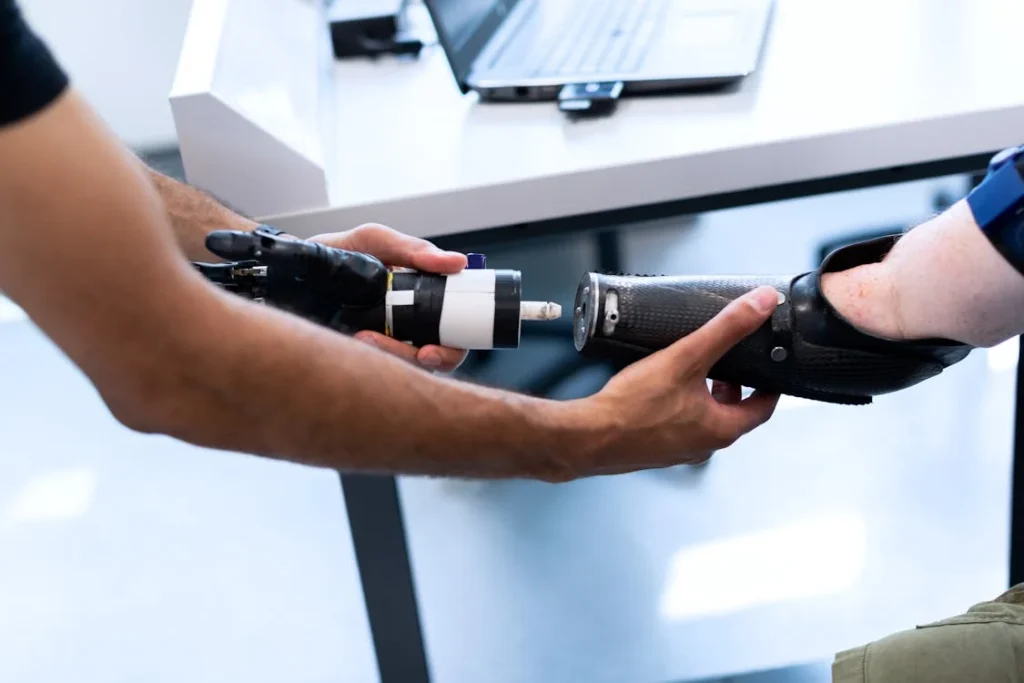
Understanding Insurance Coverage for Prosthetic Devices
Many people assume that health insurance automatically covers prosthetic devices, but this is not always the case. Different insurance companies have different policies regarding prosthetic limb coverage.
Some plans cover only basic prosthetic devices, while others may offer full or partial reimbursement for advanced bionic limbs like Grippy™ by Robobionics. The first step in claiming insurance is understanding whether your policy covers prosthetics and under what conditions.
Checking Your Insurance Policy
Insurance companies categorize medical expenses into different sections. Prosthetic limbs and assistive devices often fall under durable medical equipment (DME) or rehabilitation expenses.
Some policies consider prosthetics as essential medical equipment for post-surgical recovery, while others classify them as external devices, which may not be fully covered.
Reading through your insurance documents carefully is important. Look for specific terms related to prosthetic devices, artificial limbs, post-operative rehabilitation, and medical equipment coverage.
Some policies may not mention prosthetics directly but may cover rehabilitation expenses after amputation. If you are unsure, contacting your insurance provider directly is the best way to get clarity.
Many corporate health insurance plans provide better prosthetic limb coverage than individual policies. If you are employed, your company’s group insurance plan may offer additional benefits that are not available in personal insurance policies.
It is worth checking with your HR department to see if your employer’s insurance plan includes coverage for prosthetic limbs.
Understanding Different Types of Insurance Coverage
Prosthetic limb coverage can come under various types of insurance policies, depending on the reason for amputation or disability. General health insurance policies may offer partial or full coverage, but accident insurance and disability insurance often provide better benefits.
If a person loses a limb due to an accident, their personal accident insurance policy might cover the cost of a prosthetic limb as part of post-injury rehabilitation expenses.
Similarly, individuals with disability insurance may receive financial support for prosthetic devices, especially if the disability impacts their ability to work.
Government schemes such as Ayushman Bharat Pradhan Mantri Jan Arogya Yojana (PMJAY) also provide limited assistance for prosthetic limbs.
While not all prosthetic devices are covered under government-funded insurance, some state-specific healthcare schemes offer financial aid for people with disabilities.
Understanding which category your insurance falls under will help in determining how to approach the claims process.
Verifying Coverage Before Buying a Prosthetic Device
Before purchasing a prosthetic limb, it is important to confirm whether your insurance will cover the cost upfront or offer reimbursement later. Some policies have a cashless claim option, where the insurance company directly settles the bill with the healthcare provider.
Others work on a reimbursement basis, meaning you must pay for the prosthetic device first and then file a claim to recover the expenses.
To avoid unexpected costs, ask your insurance provider for a detailed breakdown of what is covered. If possible, get a written confirmation or an email from your insurer stating the amount they will cover, as well as any conditions or limitations.
Some insurance providers cap the amount they will pay for prosthetic limbs, meaning they will only cover a certain percentage of the total cost.
Understanding these details before making a purchase will prevent claim rejections and financial surprises. It will also help you choose a prosthetic limb that fits within your insurance budget while meeting your mobility needs.

Step-by-Step Process for Filing an Insurance Claim for a Prosthetic Device
Once you have confirmed that your insurance policy covers prosthetic devices, the next step is filing a claim. Many insurance claims are delayed or rejected due to incomplete paperwork, lack of proper approvals, or unclear documentation.
Following the right process ensures that you receive the maximum possible reimbursement without unnecessary delays.
Step 1: Obtain a Doctor’s Prescription and Medical Justification
Insurance companies require medical proof that a prosthetic device is necessary. A doctor’s prescription serves as official documentation stating that the prosthetic limb is essential for mobility and daily activities.
This document should clearly mention the reason for amputation or limb loss, the type of prosthetic device required, and how it will improve the patient’s quality of life.
In addition to a prescription, some insurance companies ask for a detailed medical report explaining why the prosthetic limb is required. This report should come from a certified orthopedic specialist, physiotherapist, or surgeon.
If the prosthetic limb is needed due to an accident, the hospital discharge summary and medical records related to the injury will also be required.
Step 2: Get a Cost Estimate from an Approved Prosthetic Provider
Most insurance companies have a list of approved medical equipment providers or hospitals from which you must purchase the prosthetic device. Before buying, check with your insurer to confirm whether the prosthetic provider you have chosen is approved under your policy.
Request a formal cost estimate from the prosthetic provider, detailing the price of the limb, its components, and any additional rehabilitation services included in the package. Submitting this estimate along with your claim can help speed up the approval process.
If your insurance policy offers cashless claims, the insurance company may directly settle the bill with the prosthetic provider. In the case of reimbursement claims, you will need to pay the cost upfront and submit invoices later for repayment.
Step 3: Submit a Pre-Authorization Request (If Required)
Many insurance companies require pre-authorization before approving coverage for prosthetic limbs. This step involves submitting medical reports, a doctor’s prescription, and a cost estimate to the insurance provider before making the purchase.
The insurer will then review the case and give pre-approval, which confirms the amount they will cover.
Getting pre-authorization helps prevent disputes later, as the insurance company provides written confirmation of how much they will reimburse.
If pre-authorization is denied, you can request a detailed explanation and work with your doctor to provide additional justification for the claim.
Step 4: Purchase the Prosthetic Limb and Keep All Receipts
If the claim is on a reimbursement basis, make sure to keep all receipts, invoices, and payment proofs after purchasing the prosthetic limb. Insurance providers often reject claims due to missing financial documents. Ensure that the invoice includes:
- The name and details of the patient
- The full description of the prosthetic limb, including specifications
- The total cost and payment method
- The details of the hospital or prosthetic provider
Keeping multiple copies of these documents is recommended in case of any disputes or lost paperwork.
Step 5: File the Insurance Claim with Supporting Documents
After purchasing the prosthetic device, submit the claim form along with supporting documents to your insurance provider. The required documents usually include:
- A completed claim form provided by the insurer
- Doctor’s prescription and medical justification report
- Hospital discharge summary (if applicable)
- Invoice and payment receipts from the prosthetic provider
- Any pre-authorization approvals received
If you are filing a claim through an employer’s group insurance, check if your HR department handles the process or if you need to submit documents directly to the insurer.
Step 6: Follow Up on Claim Approval
After submitting the claim, the insurance company will review the documents and approve the reimbursement based on their policy guidelines. The review process can take a few weeks, depending on the insurer.
To avoid unnecessary delays, follow up regularly with the insurance company. If additional information is requested, provide it as soon as possible. Keeping a record of all emails, calls, and approval confirmations can help resolve any disputes if needed.
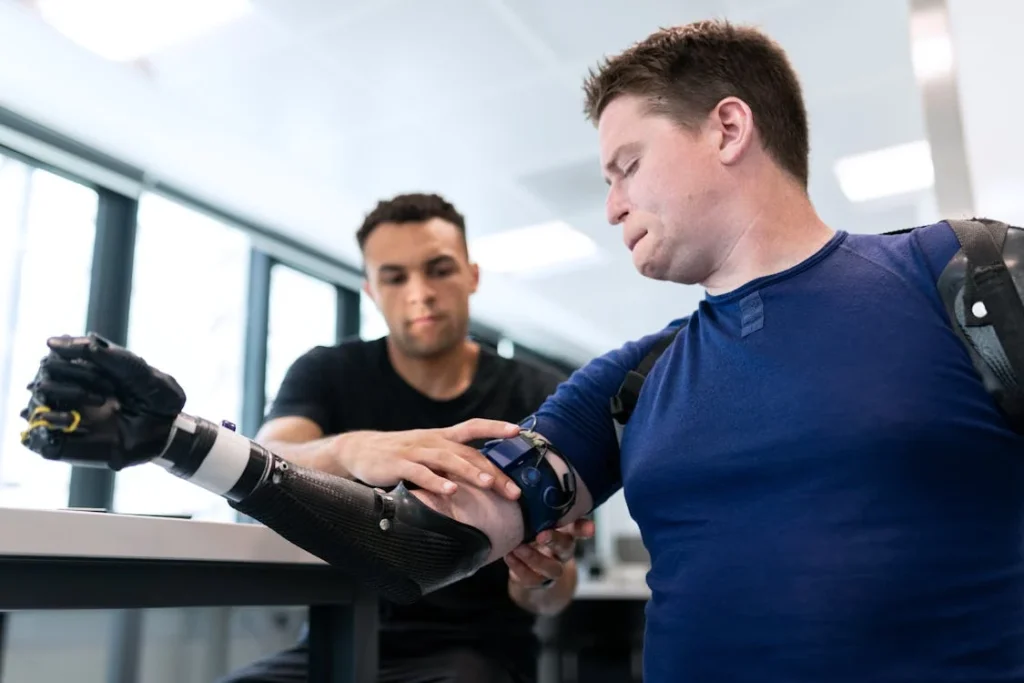
What to Do If Your Insurance Claim for a Prosthetic Device Is Denied
Despite following all the necessary steps, some insurance claims for prosthetic devices get rejected due to various reasons. This can be frustrating, but a denial does not mean you have no options.
Understanding why claims are rejected and how to appeal the decision can help you secure coverage for your prosthetic limb.
Understanding Common Reasons for Claim Denial
Insurance companies reject claims for several reasons. One of the most common is lack of sufficient medical justification. If the insurer believes that the prosthetic device is not medically necessary, they may deny coverage.
In such cases, providing a more detailed medical report from your doctor explaining why the prosthetic limb is essential for daily activities and mobility can strengthen your case.
Another reason for denial is that the prosthetic device is not covered under the policy terms. Some policies cover only basic mechanical prosthetics and exclude advanced bionic limbs.
If this is the case, reviewing your policy and checking if any add-on coverage or top-up plans are available can help.
Sometimes, claims are denied due to missing or incorrect documents. If invoices, prescriptions, or medical records are incomplete or contain errors, the insurance company may reject the claim. Double-checking all paperwork before submission can help avoid such issues.
How to Appeal a Denied Claim
If your claim is denied, the first step is to request a written explanation from the insurance company. This document will specify the reason for rejection, helping you understand what needs to be corrected or clarified.
Once you have this information, work with your doctor and prosthetic provider to gather additional evidence. A more detailed medical report, along with supporting documents such as X-rays, test results, or a letter from a rehabilitation specialist, can strengthen your appeal.
Submit an appeal letter along with the new documents to the insurance provider. Clearly state why you believe the claim should be approved and how the prosthetic device meets the insurer’s policy criteria.
If possible, refer to specific clauses in your policy that mention coverage for durable medical equipment or rehabilitation expenses.
Seeking Alternative Solutions If the Appeal Is Unsuccessful
If the insurance company rejects the appeal, there are still other ways to secure financial assistance for a prosthetic limb. Some individuals opt for corporate health plans, government schemes, or NGO support to cover costs.
If you are employed, checking with your company’s group insurance policy or CSR (Corporate Social Responsibility) initiatives may provide additional benefits.
Government programs like Ayushman Bharat or state disability welfare schemes may also offer financial aid for prosthetic limbs.
Additionally, NGOs such as Jaipur Foot, Narayan Seva Sansthan, and Bharat Vikas Parishad provide free or low-cost prosthetic limbs to eligible individuals.
Another option is crowdfunding. Many people have successfully raised funds for prosthetic limbs through platforms like Milaap, Ketto, and ImpactGuru. These platforms allow individuals to share their stories and receive support from donors who want to help.
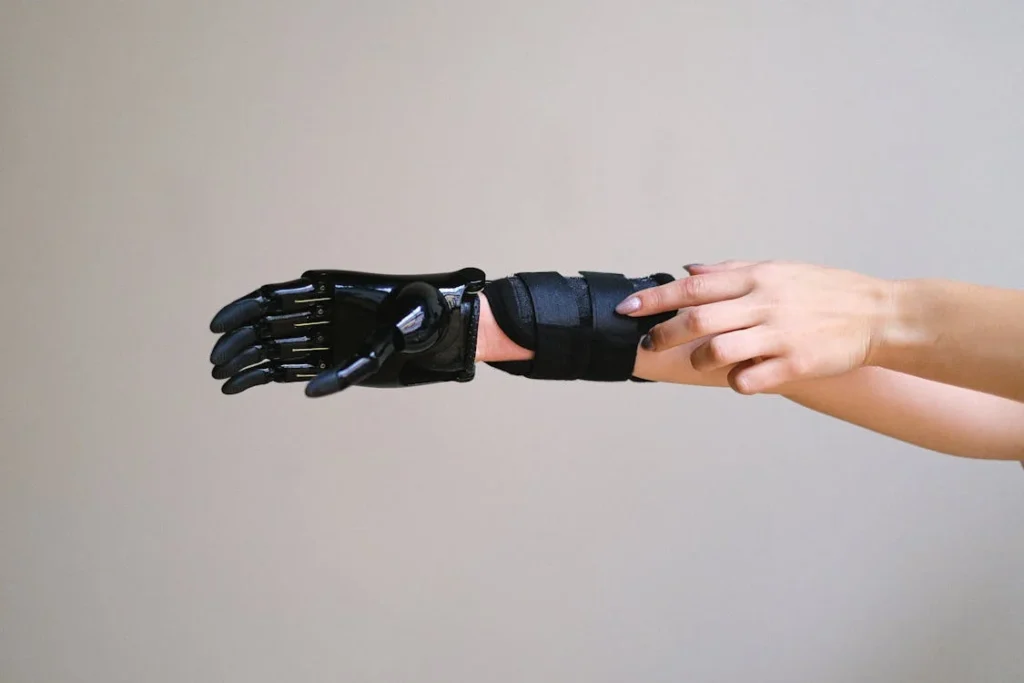
The Importance of Choosing the Right Prosthetic Device for Insurance Claims
When claiming insurance for a prosthetic device, choosing the right type of prosthetic limb is crucial.
Insurance companies often have limitations on the types of prosthetic devices they cover, and selecting a prosthetic limb that aligns with your policy can increase the chances of a successful claim.
Understanding the Different Types of Prosthetic Devices
Prosthetic limbs vary based on functionality, technology, and purpose. Some prosthetic devices are designed for basic mobility, while others incorporate advanced bionic technology to mimic natural movement.
A basic mechanical prosthetic limb is more likely to be covered under standard health insurance policies, as these are often categorized as essential medical devices.
However, insurance providers may be reluctant to cover high-end bionic limbs, as they are considered premium medical technology.
Bionic limbs, such as Grippy™ by Robobionics, offer superior movement, grip control, and comfort. While some insurance companies provide partial reimbursement for such advanced prosthetics, others may not cover them at all.
It is essential to confirm with your insurance provider whether a specific prosthetic limb model qualifies for coverage before making a purchase.
Working with a Certified Prosthetic Provider
Many insurance companies require individuals to purchase their prosthetic limbs from approved medical suppliers or certified prosthetists. If a prosthetic device is bought from a non-recognized vendor, the insurance company may reject the claim.
Before purchasing a prosthetic limb, ask your insurance provider for a list of empaneled prosthetic manufacturers or clinics.
Working with a recognized prosthetic provider also ensures that you receive proper fitting, adjustments, and aftercare support, which are critical for long-term comfort and usability.
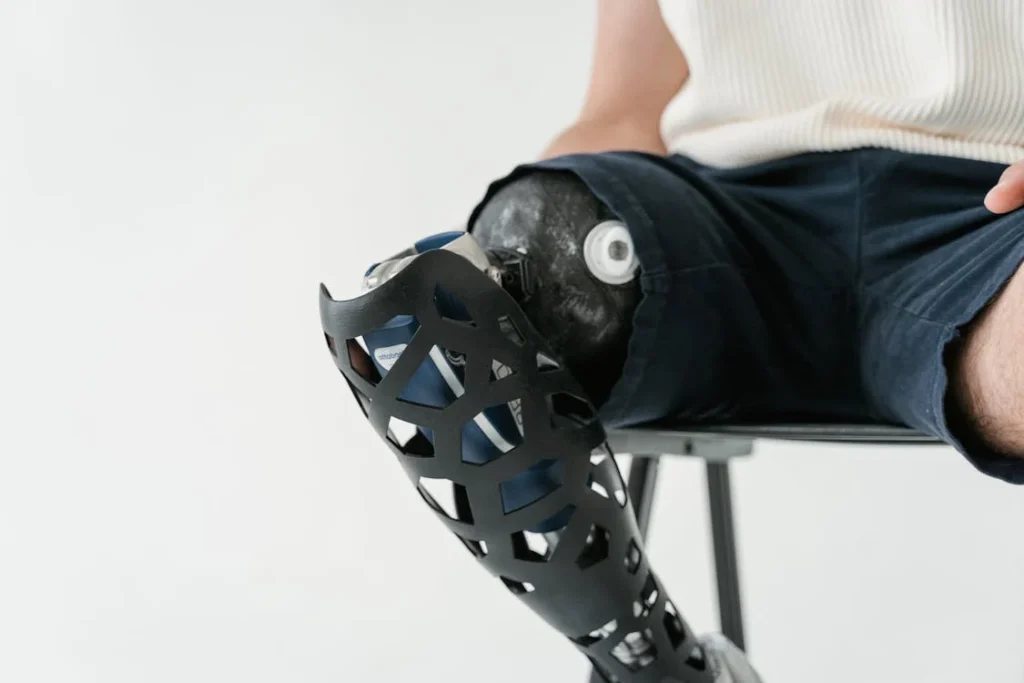
The Role of Rehabilitation in Insurance Coverage
Many people do not realize that post-prosthetic rehabilitation expenses can also be covered by insurance. After receiving a prosthetic limb, individuals often require physiotherapy, gait training, and muscle strengthening exercises to adjust to their new mobility aid.
Some insurance policies cover rehabilitation costs as part of post-surgical care, which can help reduce additional expenses.
How Rehabilitation Costs Affect Insurance Claims
Insurance companies that offer comprehensive coverage for prosthetic limbs may include physiotherapy sessions, occupational therapy, and follow-up adjustments under their benefits.
These services are essential for individuals using a prosthetic limb for the first time, as they help improve balance, movement, and overall comfort.
When filing an insurance claim, check whether your policy includes rehabilitation benefits. If it does, you may be able to claim coverage for therapy sessions at a recognized rehabilitation center, reducing the overall cost of recovery.
The Need for Home-Based Rehabilitation Programs
For individuals who cannot frequently visit a rehabilitation center, home-based therapy programs can be an effective alternative.
Some modern prosthetic limb providers, such as Robobionics, integrate gamified rehabilitation techniques to help users adjust to their prosthetic limb in a more engaging way.
If your insurance covers tele-rehabilitation or virtual physiotherapy, you may be able to receive remote guidance from certified therapists, ensuring that you can adapt to your prosthetic limb without the need for frequent clinic visits.
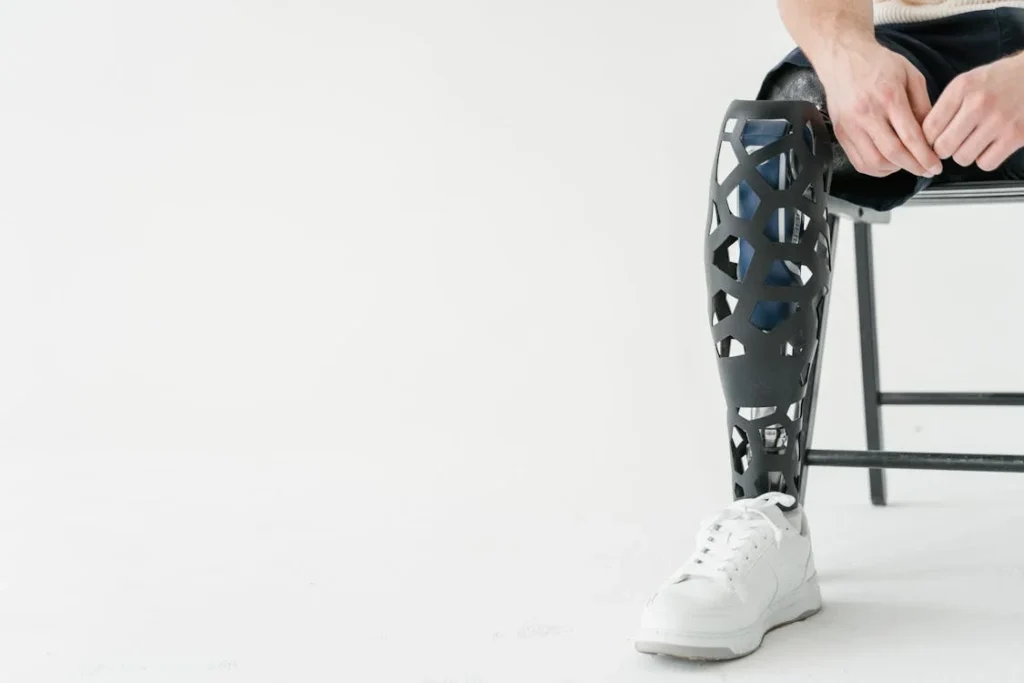
The Future of Insurance Coverage for Prosthetic Devices in India
While insurance coverage for prosthetic limbs in India has improved over the years, there is still a long way to go before comprehensive coverage becomes standard.
Many insurance companies still classify prosthetic limbs as assistive devices rather than essential medical equipment, leading to limited financial support for users.
The Need for Policy Reform
As the demand for advanced prosthetic technology increases, insurance companies will need to revise their policies to offer better coverage for prosthetic users.
Advocacy groups, prosthetic manufacturers, and rehabilitation centers are pushing for policy reforms that would ensure that prosthetic devices are treated as necessary healthcare aids rather than optional accessories.
Government-backed health insurance schemes like Ayushman Bharat may also expand their coverage to include more advanced prosthetic solutions, ensuring that individuals from all economic backgrounds can access high-quality prosthetic limbs without financial strain.
How Consumers Can Influence Insurance Policy Changes
One of the most effective ways to push for better prosthetic limb insurance coverage is through consumer demand and awareness.
When more people inquire about prosthetic limb coverage, insurance providers will be encouraged to expand their offerings to meet customer needs.
Individuals who have been denied prosthetic limb coverage can also file complaints with insurance regulators, disability rights organizations, or consumer protection groups.
These efforts can help push for industry-wide changes, ensuring that future insurance policies offer better support for prosthetic limb users.
The Role of Employers and Group Insurance in Prosthetic Coverage
For individuals who are employed, group health insurance policies provided by employers can sometimes offer better coverage for prosthetic devices than personal health insurance plans.
Many companies provide comprehensive medical benefits that include rehabilitation expenses, post-surgical care, and, in some cases, prosthetic limb coverage.
How Employer-Sponsored Insurance Can Help
Large corporations and multinational companies often include advanced medical coverage as part of their employee benefits. These policies may cover prosthetic limbs as part of disability support, accident recovery, or workplace injury compensation.
If an employee loses a limb due to a workplace accident, the company’s workers’ compensation insurance may also contribute to prosthetic limb expenses.
If you are covered under a corporate group insurance policy, check with your HR department about whether prosthetic limbs are included. Some companies allow employees to add riders or upgrade their policies to include durable medical equipment like prosthetics.
For employees in the government sector, organizations such as Indian Railways, Defense Services, and Public Sector Units (PSUs) sometimes offer better medical reimbursements for prosthetic limbs compared to private insurance providers.
Government employees can apply for special medical grants that help cover the cost of a prosthetic device.
How to Request Prosthetic Coverage Through Your Employer
If your company does not currently offer prosthetic limb coverage, you can request an extension of benefits by formally appealing to HR or the insurance provider managing the company’s health plan.
Providing case studies, medical justifications, and examples of other companies offering such benefits can strengthen your request.
Employers who engage in corporate social responsibility (CSR) initiatives may also be open to sponsoring prosthetic limbs for employees who need them.
Some companies even partner with NGOs and prosthetic manufacturers to provide their employees with affordable or subsidized prosthetic solutions.
Understanding Partial Coverage and Co-Payment Options
Even if an insurance policy covers prosthetic limbs, it may not always pay the full cost of the device.
Many insurance providers offer partial coverage, meaning the policyholder is responsible for a co-payment or deductible before the insurance provider reimburses the remaining amount.
What to Do If Your Insurance Covers Only a Portion of the Cost
If your insurance does not cover 100% of the prosthetic limb’s cost, you may need to pay the difference out of pocket or find alternative funding sources.
Some individuals choose to apply for government disability grants, NGO assistance, or financial aid programs to cover the remaining amount.
Some prosthetic manufacturers, including Robobionics, offer payment plans, financing options, or installment-based purchases, making it easier for individuals to afford advanced prosthetic limbs.
Checking with your prosthetic provider for flexible payment options can help if your insurance covers only a portion of the cost.
How to Reduce Out-of-Pocket Expenses
To minimize out-of-pocket expenses, policyholders can negotiate with their insurance provider to increase their coverage limit. Some insurers allow customers to upgrade their policies or add riders that specifically cover prosthetic limbs and rehabilitation.
Another way to reduce costs is by opting for prosthetic limbs that fall within the approved insurance budget.
If an insurer only covers a basic model, individuals can start with an insured prosthetic limb and later upgrade to a more advanced bionic prosthetic once additional funding is secured.
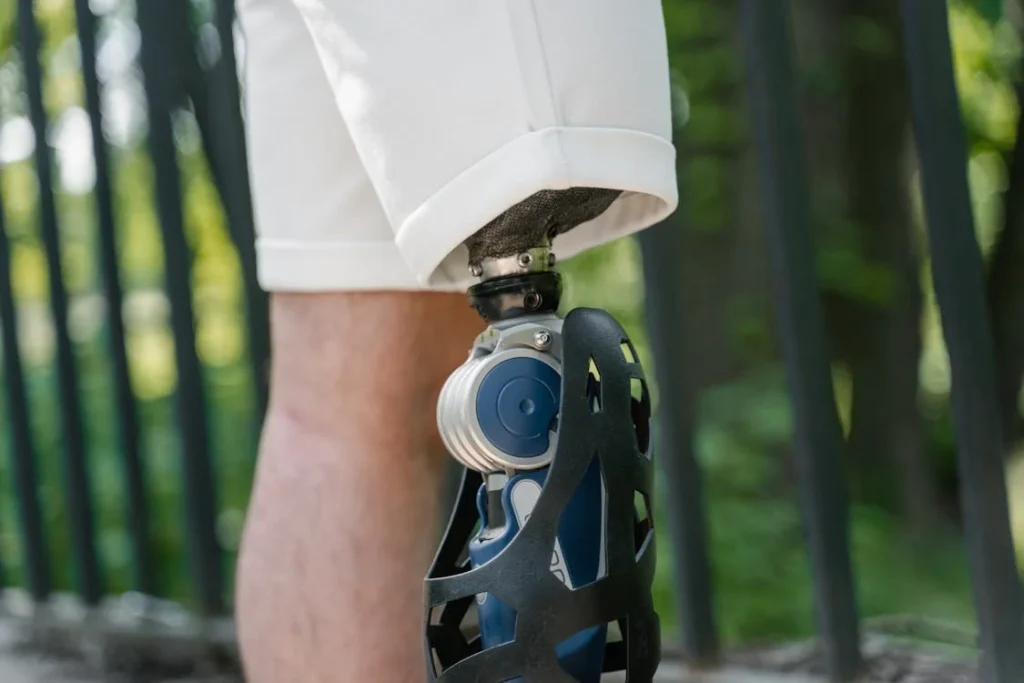
How NGOs and Crowdfunding Can Supplement Insurance Coverage
For individuals whose insurance does not fully cover prosthetic devices, NGOs and crowdfunding platforms provide an alternative way to secure financial assistance.
Many non-governmental organizations (NGOs) in India offer free or low-cost prosthetic limbs for those who cannot afford them.
NGOs That Provide Prosthetic Limb Assistance
Organizations such as Jaipur Foot (BMVSS), Narayan Seva Sansthan, and Bharat Vikas Parishad regularly conduct prosthetic limb donation camps across India.
These NGOs work with hospitals, rehabilitation centers, and prosthetic manufacturers to provide affordable and accessible prosthetic solutions.
If an insurance claim is denied or only partially covered, applying for assistance through an NGO can help offset the remaining costs. Many NGOs also provide physiotherapy, training, and follow-up care, ensuring that beneficiaries can fully adapt to their new prosthetic limbs.
How Crowdfunding Can Help Cover Prosthetic Costs
Crowdfunding has become a powerful tool for individuals seeking financial assistance for medical expenses, including prosthetic limbs.
Platforms like Milaap, Ketto, and ImpactGuru allow people to create fundraising campaigns, share their stories, and receive donations from supporters worldwide.
If an insurance claim is denied or falls short, launching a crowdfunding campaign can help raise funds for a high-quality prosthetic limb.
Many individuals have successfully raised money to purchase bionic hands, advanced prosthetic legs, and rehabilitation services through crowdfunding efforts.
Conclusion
Claiming insurance for a prosthetic device in India can be a complex process, but with the right approach, it is possible to secure financial assistance. Understanding your policy’s coverage, gathering proper medical documentation, working with approved prosthetic providers, and following up on claims are key steps in ensuring a successful reimbursement or cashless claim.
If your insurance does not fully cover the cost of a prosthetic limb, alternative funding options such as NGOs, crowdfunding, employer-sponsored health plans, and government disability schemes can help bridge the gap. With growing awareness and advancements in prosthetic technology, insurance companies may soon expand their coverage to make high-quality prosthetic limbs more accessible to everyone.
At Robobionics, we believe that no one should have to compromise on mobility due to financial limitations. Whether you need guidance on insurance claims, prosthetic limb selection, or funding options, we are here to help. If you or a loved one is looking for an affordable, high-quality prosthetic limb, reach out to us today—let’s take the next step toward independence together.




Great article its really informative and innovative keep us posted with new updates. it was really valuable. thanks a lot.
Great article its really informative and innovative keep us posted with new updates. it was really valuable. thanks a lot.